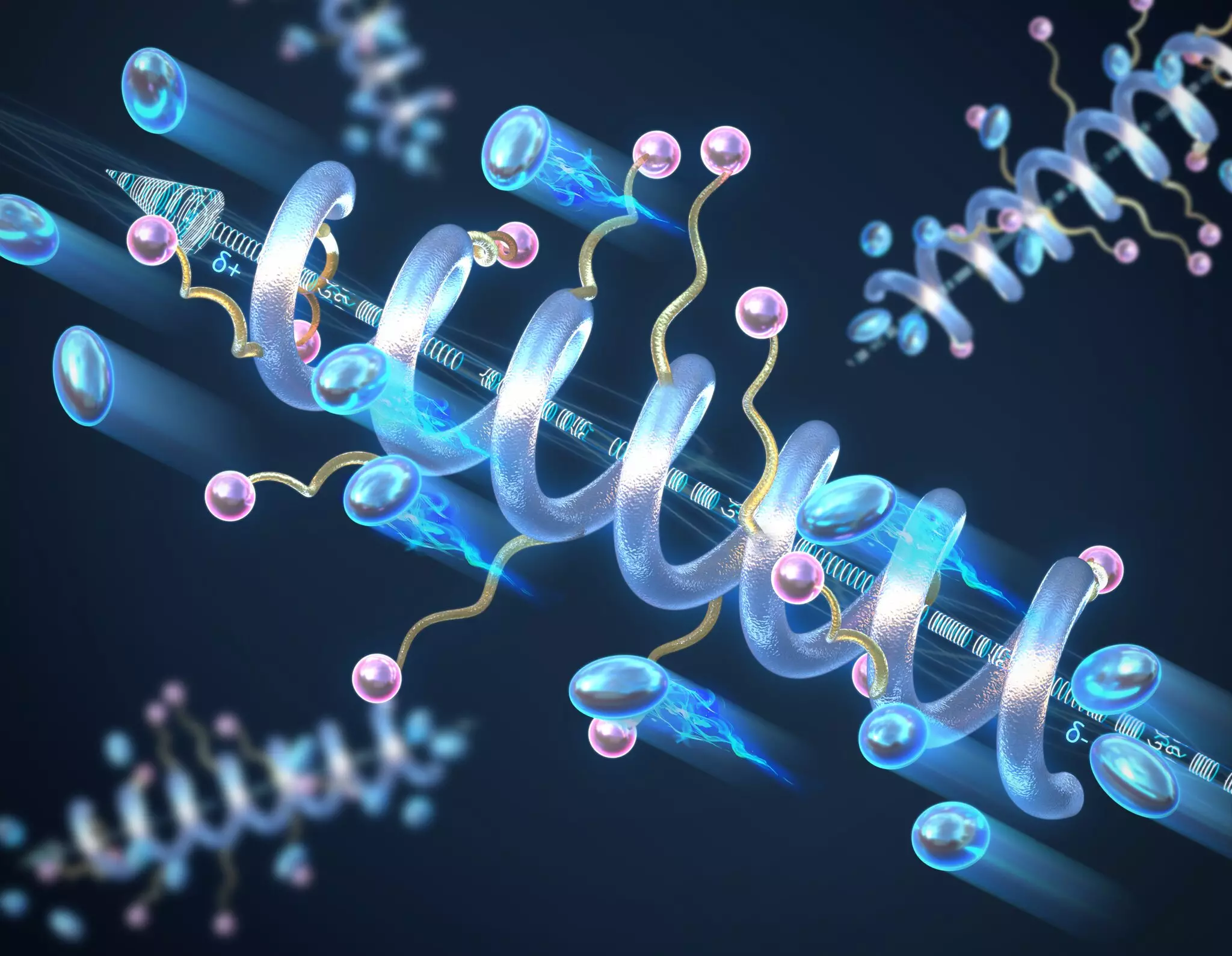In the ever-evolving landscape of energy storage solutions, the demand for safer and more efficient battery systems is paramount. Traditional batteries, which predominantly use liquid electrolytes, are increasingly scrutinized for their safety and performance. Chemists and engineers continue to investigate solid-state electrolytes—firm materials that allow ions to transfer without the risks posed by liquid counterparts. Among the many avenues of research in this field, a novel approach focusing on the secondary structures of peptides shows promise for enhancing both safety and efficiency in future solid-state batteries.
Recent groundbreaking research from the University of Illinois Urbana-Champaign has unveiled the significant impact that helical secondary structures can have on the conductivity of polymer-based solid-state electrolytes. Traditionally, polymers in these applications have existed in random coil configurations, which impede optimal ionic movement. The innovative work led by Professor Chris Evans indicates that when these polymers are engineered to adopt a helical conformation—akin to the structure found in biological peptides—the effects on conductivity are remarkable.
The study highlights that longer peptide helices not only boost ionic conductivity but also enhance the material’s thermal and electrochemical stability. This is crucial, as many energy storage devices often face challenges such as overheating or malfunction at high voltages. By transforming the molecular architecture of these polymers, researchers can mitigate such risks, making the new materials much more reliable than their random coil counterparts.
The fascinating aspect of this research lies in nature’s universal design principles. Helical structures, which are frequently observed in biological materials, inspire these polymer designs. By manipulating the polymer backbone to form stable helical shapes, scientists are not merely borrowing designs from nature—they are applying ecological principles to create materials that outperform existing technologies.
One critical advantage of the helical configuration is the generation of a macrodipole moment. This phenomenon results from the cumulative effect of individual dipole moments within the helix, which leads to improved ionic conductivity and a higher dielectric constant—a key factor in a material’s ability to store electrical energy efficiently. Hence, longer helical polymers can furnish batteries with improved charge transport capabilities, enhancing overall battery performance significantly.
Another striking benefit of these peptide-based solid-state electrolytes is their environmental compatibility. When conventional batteries reach the end of their life cycle, they often contribute to ecological harm through toxic waste and non-biodegradable materials. However, the helical peptide polymers devised in this research can decompose back into monomer units using biological enzymes or acid. This feature enables safer disposal and recycling of battery components, which helps mitigate environmental concerns associated with battery waste.
The methodology not only emphasizes high performance but embraces sustainability—an essential factor as the world pivots towards eco-friendly technologies. If these novel helical structures can scale and be integrated into commercial products, they could help usher in a new era of lightweight, durable, and environmentally considerate energy storage solutions.
This compelling research not only suggests immediate improvements in battery technology but also envisions a broader application of peptide-based materials in energy storage systems. As the field of materials science advances, continued exploration and development of such biocompatible structures may lead to innovative strategies that mitigate existing battery limitations.
However, it’s crucial to acknowledge the challenges ahead. Transitioning this lab-scale research to commercially viable products will require significant investment in technology and resources, as well as collaborations across various scientific disciplines. Despite these challenges, the integration of molecular design strategies into materials science heralds a hopeful advancement in the quest for sustainable and effective energy storage solutions.
By leveraging natural molecular configurations, such as helical structures, the researchers at the University of Illinois Urbana-Champaign have laid the groundwork for potentially transformative improvements in battery technology. This research not only enhances the functionality and safety of solid-state batteries but also emphasizes our responsibility towards sustainable energy practices in the future.

